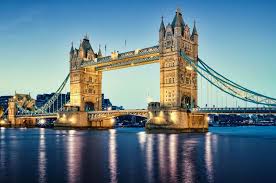London Bridge in London
London Bridge, one of the most iconic structures in the world, carries with it a rich history that intertwines with the evolution of London itself. Its significance stretches back nearly two millennia, with the first London Bridge believed to have been constructed by the Romans around AD 50. This early bridge was a simple wooden structure, crucial for the development of Londinium as it facilitated trade and movement across the River Thames. Over the centuries, London Bridge has undergone numerous transformations, reflecting the architectural and technological advancements of each era.
One of the most famous versions of London Bridge was built in the medieval period, completed in 1209 under the reign of King John. This stone bridge, which stood for over 600 years, became famous not just for its longevity but also for its bustling community. It housed shops, homes, and even a chapel dedicated to St. Thomas Becket, making it a vibrant commercial hub. However, its crowded and heavy structure often caused it to be a bottleneck for traffic and a site of frequent fires and collapses, leading to its depiction in the nursery rhyme “London Bridge is Falling Down.”
By the early 19th century, the old medieval bridge could no longer accommodate the growing demands of London’s population and traffic. Thus, a new granite bridge, designed by John Rennie, was completed in 1831. This bridge was more modern and sturdy, serving the city until the 20th century. Remarkably, in 1968, this iteration of London Bridge was sold to an American entrepreneur, Robert P. McCulloch, who relocated it to Lake Havasu City, Arizona, where it still stands today as a unique tourist attraction.
The current London Bridge, which opened in 1973, is a functional concrete and steel structure designed to handle contemporary traffic demands. While it may not have the same historical charm as its predecessors, it plays a vital role in London’s transportation network. Located between the City of London and Southwark, it connects various key parts of the city, serving as a vital artery for commuters, tourists, and locals alike. The bridge’s modern design reflects the continual growth and change of London, symbolizing both its storied past and its forward-looking future.
London Bridge’s history is a microcosm of London’s own evolution, embodying the city’s resilience, innovation, and enduring significance. From its Roman origins to its present-day incarnation, the bridge has witnessed and facilitated the city’s growth, standing as a testament to London’s ability to adapt and thrive through the ages. Today, while not as visually striking as some of its neighbors like Tower Bridge, London Bridge remains an essential and enduring part of the city’s landscape, steeped in history and continuing to support the life and growth of one of the world’s greatest cities.

































































https://speakerdeck.com/gwoodscapes
https://www.codecademy.com/profiles/gwoodscapesunits
https://infogram.com/godrej-woodscapes-1hnp27eez3wdy4g
https://www.manta.com/c/m1wdw48/godrej-woodscapes-units
https://www.threadless.com/@woodscapesg/activity
https://businesslistingplus.com/profile/mia-lane/
https://www.litespeedtech.com/support/forum/members/gwoodscapes.142613/
https://www.pressreader.com/@nickname32496587
https://gwoodscapesunit.bravesites.com/
https://mixi.jp/show_profile.pl?id=68528332
https://www.besport.com/user/873924
https://www.litteratureaudio.com/membre/praintreepark/profil
https://www.sythe.org/members/praintreepark.1740893/
https://storium.com/user/praintreepark
https://builtbybit.com/members/praintreepark.507297/
https://flipboard.com/@prestigesom53li/prestige-somerville-units-8m7nnaspy
https://l10n.gnome.org/users/somervilleunits/
https://forum.repetier.com/profile/praintreepark
http://homes.adlandpro.com/Commercial-for-sale/Prestige-Somerville-Units-Overview-banglorein1_a/42871996.aspx
https://may-dialogue.lamayenne.fr/profiles/prestige_raintree_pa/activity
https://agelooksataging.ning.com/profile/PrestigeSomervilleUnits
https://community.elastic.co/u/mwcd62/#/about
http://tuluyouthrocks.ning.com/members/PrestigeSomervilleUnits
https://flipboard.com/@PrestigeSom53li
https://padlet.com/psomervilleunits/prestige-somerville-g7vj2e88oh87zqfa
https://dev.epicgames.com/community/profile/m98D9/psomerville
https://community.amd.com/t5/user/viewprofilepage/user-id/419908
https://participa.gencat.cat/profiles/prestigesomerville/activity